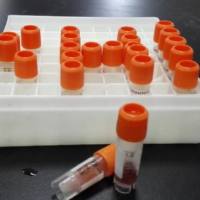PNA Fluorescent In Situ Hybridization (FISH) for Rapid Microbiology and Cytogenetic Analysis
互联网
716
Hybridization-based assays for the detection of nucleic acids including in situ hybridization are increasingly being utilized
in a wide variety of disciplines such as cytogenetics, microbiology, and histology. Generally in situ hybridization assays
utilize either cloned genomic probes for the detection of DNA sequences or oligonucleotide probes for the detection of DNA
or RNA sequences. Alternately, PNA probes are increasingly being utilized in a variety of in situ hybridization assays [1,
2]. The neutral backbone of the PNA molecule allows for the PNA probes to bind to DNA or RNA under low ionic strength conditions
that will either disfavor reannealing of complimentary genomic sequences or are denaturing for RNA secondary structure but
are favorable for PNA/DNA or PNA/RNA hybridization [3, 4]. For in situ hybridization assays these unique properties of PNA
probes offer significant advantages that allow for the development of fast, simple, and robust assays (Figs. 14.1 and 14.2).









